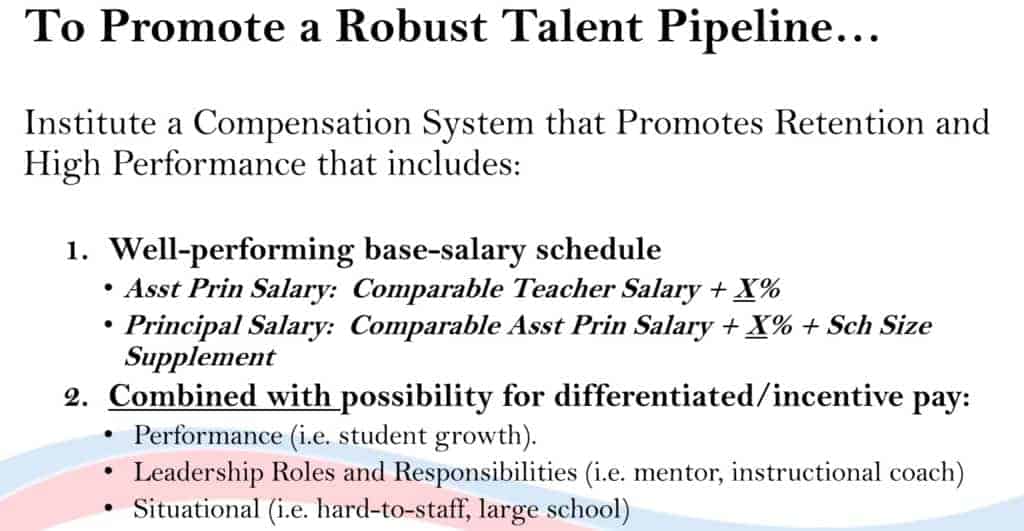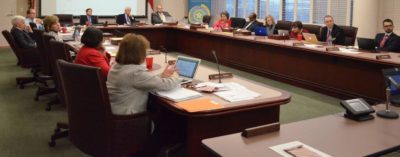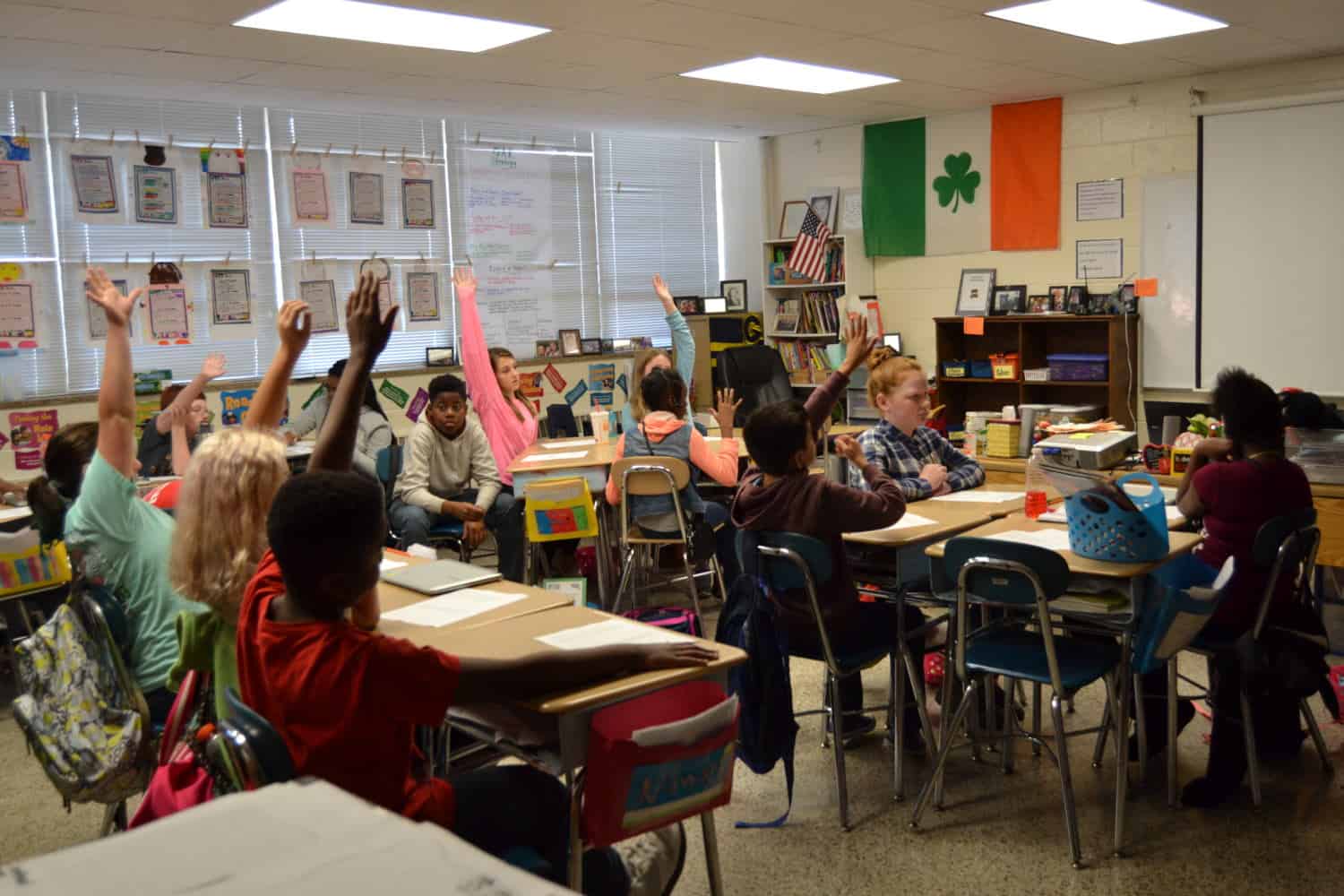As the new school year begins, many are considering the ramifications of the new principal pay schedule passed during the long session of the General Assembly.
Critics say some principals will have their salaries reduced under the new plan, but at least one prominent education legislator said fears are overblown.
“There is no evil intent on principal pay or class size,” said Rep. Craig Horn, R-Union. “Legislation is not an exact science. We do things that we think will help solve an issue.”
The goals of altering the principal pay schedule were to elevate North Carolina’s low standings — 50th out of all the states and Washington, D.C. — in principal pay and to fix problems with the previous principal pay schedule.
EducationNC reported extensively on those problems. For background on principal pay legislation and recent criticisms, see this EducationNC article.
One of the issues receiving attention presently is the so-called “hold harmless” provision of the law which provides that principals would not have a reduction to an amount less than they were making under the old schedule. Without the provision, some principals would not make as much under the new schedule as they did previously. The potential risk affects veteran principals in particular, because the new salary schedule does not take into account years of experience in salary considerations, and it eliminates the longevity pay that favors veteran principals.
However, the hold harmless provision only lasts one year. Some worry the provision will not be extended, and next year some principals’ salaries will plummet.
“My biggest beef on this thing, if there’s loopholes, if there’s unintended consequences, we need to address those unintended consequences,” said State Board Vice Chair Buddy Collins. “Veteran principals are losing a substantial amount of pay if the hold harmless is not extended.”
But Horn said if there are principals that stand to lose substantial amounts of pay, the hold harmless will be addressed in the short session of the General Assembly this spring.
“Did we intend to get it done perfectly? Well, we would have liked to have, but we don’t kid ourselves,” Horn said. “Did we intend to screw somebody? No. Period.”
Horn also expresses frustration with some of the critics who he said have unfairly used the hold harmless provision to demonize Republicans. He said their fears are theoretical.
“That may happen. This may happen. The Earth may explode. To use that as a bludgeon is patently ridiculous,” he said. “It’s fear mongering and political crap at its worst.”
Even if the hold harmless provision is addressed, Keith Poston, director of the Public School Forum of North Carolina, said it is not enough.
“That doesn’t really address the problem. What happens is that the exceptions swallow the rule,” he said. “It’s no longer a new pay plan. It’s a new pay plan, unless your pay goes down, then it’s something else because we have a band-aid on it called a hold harmless provision.”
The structural issues that affect veteran principals need to be fixed, he said.
“By targeting things like experience level, longevity pay, targeting things like supplemental pay for advanced degrees, you’re going to hit more veteran educators,” he said. “By taking those things out, you are already putting the most veteran principals at risk.”
Shirley Prince, executive director of the North Carolina Principals and Assistant Principals’ Association, discussed some of her concerns about aspects of the plan in a podcast with EducationNC last month. She said there are tweaks that need to be addressed, including extending the hold harmless provision.
Last November, Prince presented a different plan to a study committee on school-based administrator pay.

But overall, Prince is happy the General Assembly took steps to increase principal pay. She said her organization predicts 75 percent of principals will benefit from the legislation. “It’s a significant amount of new funding being injected into the pay plan,” she said.
The plan puts more than $35 million additional dollars into principal pay this year, and more than $40 million next year.
At the last State Board of Education meeting, the problems with the principal pay schedule were discussed and the Board directed the Department of Public Instruction and Superintendent Mark Johnson to collect information about the problems and provide them to the General Assembly.
Horn said he will withhold judgment until he sees the data, but the legislature is ready to do something if critics are right.
“The legislature is prepared, and we put in a hold harmless to make sure that in case there was something we overlooked, no one would get hurt,” he said. “Now we’re finding, allegedly, that there is someone being hurt, so we will have to make those adjustments.”
A disincentive for principals?
Another issue that Poston, Collins, and others are concerned about is the tie between the new principal pay schedule and student growth.
Below is the new salary schedule.

A principal receives a base salary based on how many students are in a school. If the students in that school meet growth, the principal receives a higher salary than the base. If the students exceed growth, the principal receives an even higher salary.
“There is a basic philosophical concern, which is, is it good policy to tie principal pay to performance pay based on a value-added assessment?” Collins asked.
That value-added assessment is EVAAS, a tool designed by SAS. EVAAS is a software system the Department of Public Instruction explains this way:
“EVAAS examines the impact of teachers, schools, and districts on the learning of their students in specific courses, grades, and subjects. Users can access colorful, easy-to-understand charts and graphs via the Web, as well as produce customized reports that predict student success, show the effects of schooling at particular schools, or reveal patterns in subgroup performance.”
One of the measures of EVAAS— student growth— is used to evaluate teachers. Collins said EVAAS was not designed to be used for determining principal pay.
Trent Smith, senior government and education communications specialist at SAS, said the use of the EVAAS measures is more a policy decision than a technical one.
“EVAAS provides a reliable measure of growth for a group of students from one year to the next. This group can be defined as all students at a school (all students associated with a principal) or all students with a teacher. If the policy aims to capture information about whether the group of students is making growth, then EVAAS would meet that need,” he said in an email.
Thomas Tomberlin, director of Educator Human Capital Policy and Research at the Department of Public Instruction, said that EVAAS could be used for the legislature’s purpose.
“EVAAS was designed to measure the instructional impact of teachers, schools, or programs on student learning. Tying EVAAS to pay is a policy decision, and I believe the legislature has clearly established their desire to link principals’ compensation with students’ academic growth,” he said in an e-mail. “If my understanding of the legislature’s intent is correct, then EVAAS would be a valid indicator to support that intent.”
Nevertheless, Poston worries the new salary schedule will discourage principals from going to the schools that need them most.
“I think that this type of a performance pay plan could ultimately be worse than the cuts, because it will likely serve as a disincentive to our top performing principals to go to our low performing schools that are predominately high poverty schools,” he said.
But Horn sees it differently.
“As a matter of fact, your opportunity to show growth is enhanced by going to a low-performing school,” he said.
He said because there is more room for improvement on growth at low-performing schools, there is more opportunity. A high-performing school may have students doing so well that additional growth is difficult, whereas a low-performing school has a lot more room for growth. He said he understands the fear, but he thinks principals are up to the job.
“I understand certainly that these are low-performing schools because they’re just not growing. To me it’s just like blaming the kids. I don’t blame the kids. I don’t blame anybody. I’m looking for progress,” he said. “If somebody has an idea of how we can provide additional incentives to attract professionals…to low-performing schools, I’m anxious to hear.”
It is not only the legislature that received criticism for the principal pay plan. An op-ed by the Capitol Broadcasting Company criticized BEST NC, a nonprofit, nonpartisan coalition of business leaders, for its support of the new pay schedule.
In a statement, Brenda Berg, president and CEO of the organization, said the group is going to work with legislators to correct any deficiencies.
Horn said the kind of principals public education needs are the kind that will go to low-performing schools because of the challenge.
“It is harder. I believe it is harder. Because it’s hard is that a disincentive? Or, to some people, because it’s hard, is it an incentive?” he asked. “I want to play in the bigs. I want the hardest challenge you can throw at me. The interesting part of thinking about that is that the principals that have that attitude, those are the ones we really need in those low-performing schools.”
Old ideas
Last November, a Joint Legislative Study Committee on School-Based Administrator Pay heard from experts on principal pay suggestions.
Below are links to the presentations from the different participants. Click on the name of the presenter for the specific plans.
Andy Baxter, vice president of Educator Effectiveness for the Southern Regional Education Board
Brenda Berg, president and CEO of BEST NC
Shirley Prince, executive director of the North Carolina Principals and Assistant Principals’ Association
Details of the first plan on principal pay presented by legislators at a Joint Legislative Study Committee on School-Based Administrator Pay in October 2016 may be found here and here.
This bill on principal pay preceded the final plan which was included in the budget.
Editor’s Note: Shirley Prince is on the Board of Directors of EducationNC. SAS supports EducationNC.
Recommended reading




